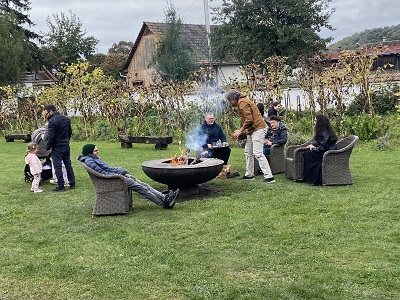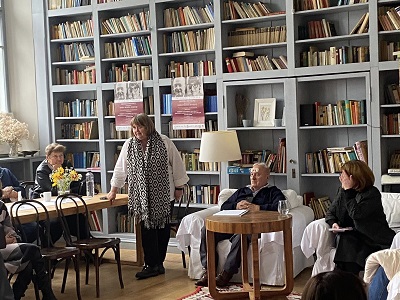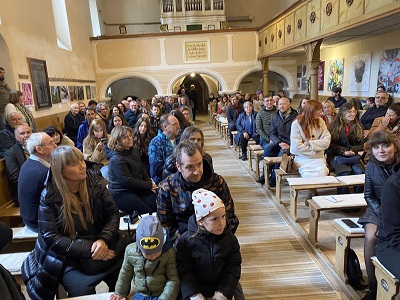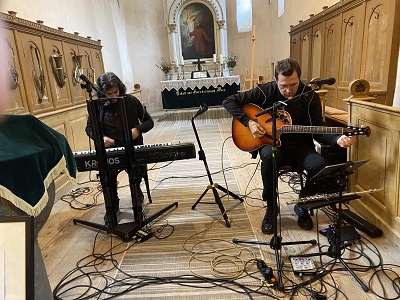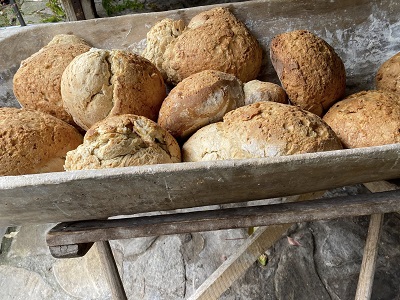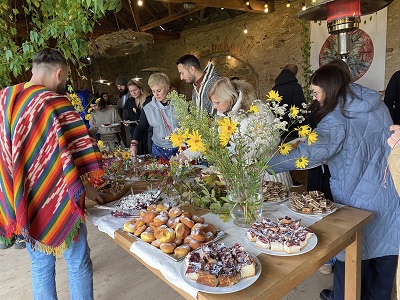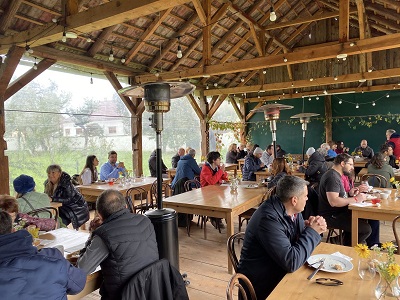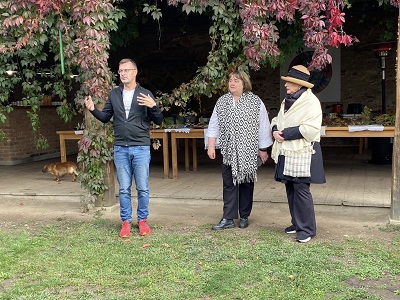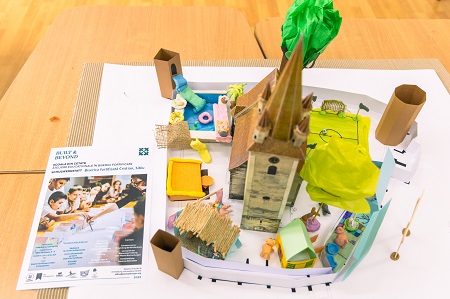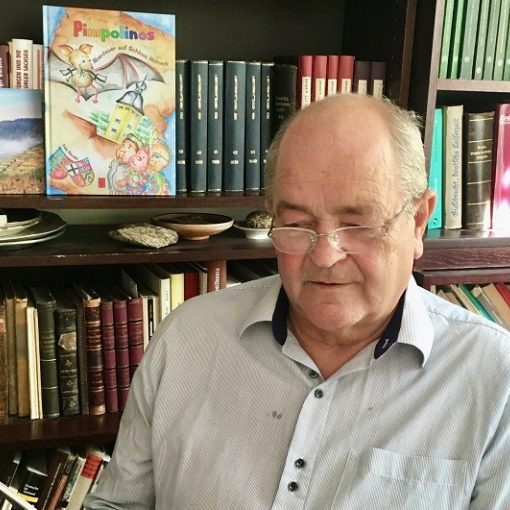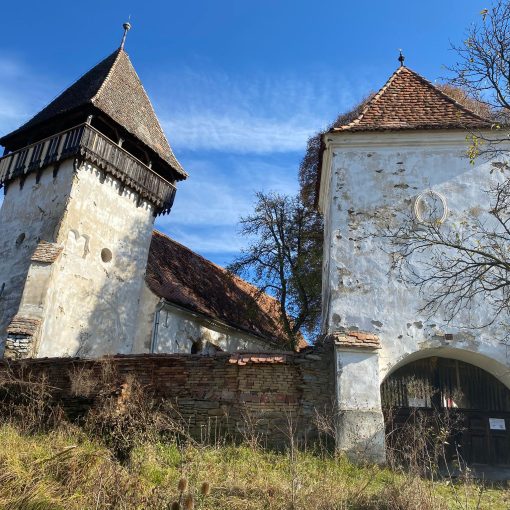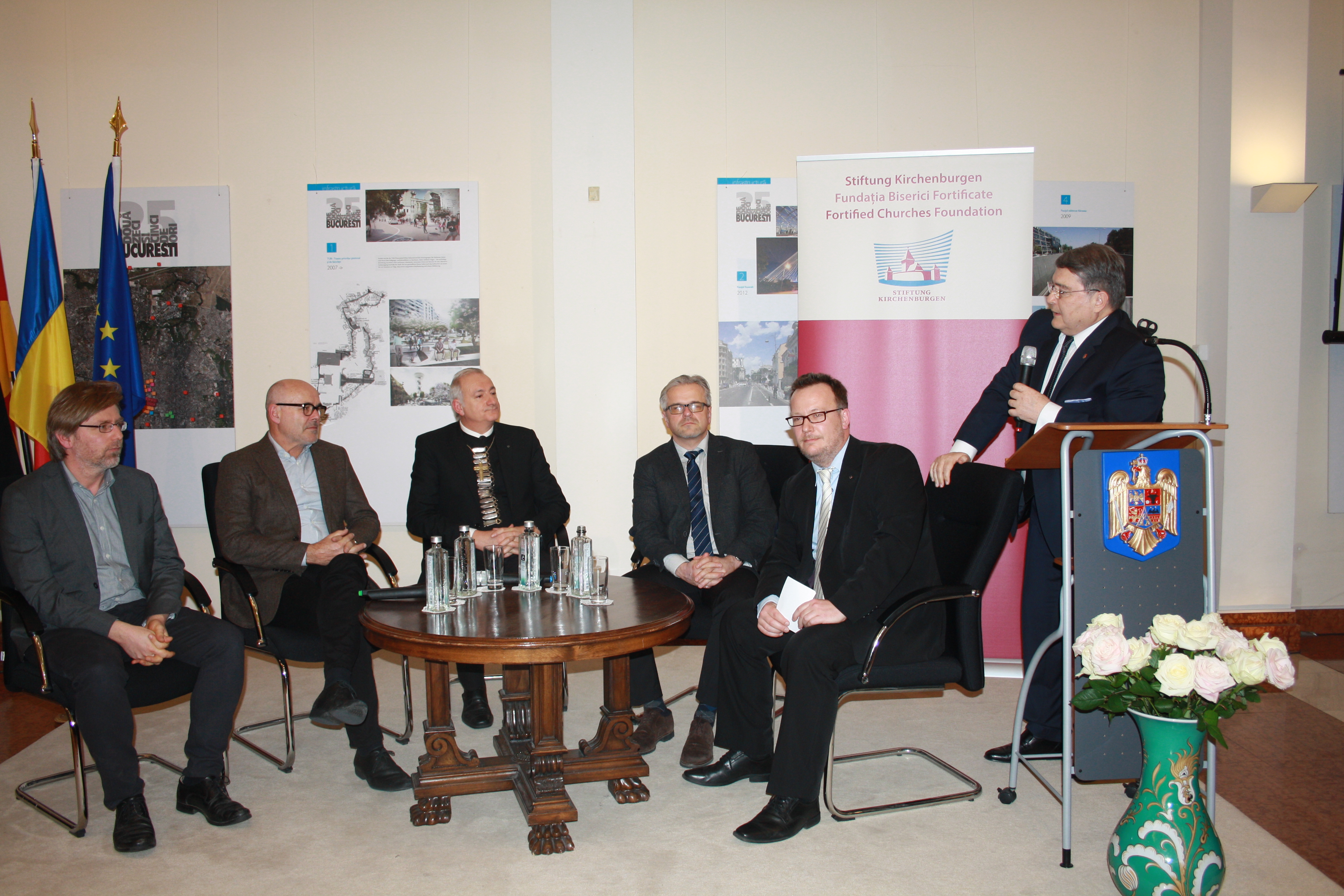At the beginning of October, another event organized by the Fortified Churches Foundation of the Evangelical Church in Romania took place – this time in Cincșor (Kleinschenk). What made it special was the successful blend of art, literature, music, and history – naturally rounded off with a gastronomic offering that left nothing to be desired.
In Cincșor, Carmen Schuster – one of the so-called “returnees,” as the Saxons call those who have come back – has renovated the former Evangelical school (a building designed by architect Fritz Balthes), the old parish house, and several surrounding Saxon farmhouses. The result is an ensemble centered around the Cincșor fortified church – now known as the Cincșor Cultural Church. In this way, the small village has become a tourist attraction.
Carmen Schuster is also the curator of the Evangelical Church, and this became very clear during her welcome speech to the approximately 100 guests. With great passion, she advocated for the development of new concepts to preserve the more than 160 fortified churches of Transylvania. There is a need for ideas and for people who not only take care of the buildings themselves but also make these fortified churches – this valuable Saxon cultural heritage – attractive to people of different backgrounds, encouraging them to become involved in their preservation. The project in Cincșor sets an excellent example in this regard.
The day of the Transylvanian Brunch also marked the conclusion of the Cincșor Artists’ Week. For one week, eight visual artists from Germany and Romania were guests of the local Evangelical parish, the CONTRAFORT Association, and the Cincșor guesthouses. The theme of this year’s edition was the creative engagement with nature in its Transylvanian uniqueness. The selection of artists and the design of the exhibition FLORILEGIUM bear the signature of artist and art expert Elisabeth Ochsenfeld.
The exhibited works highlight the uniqueness of this special place – the church of Cincșor. The vernissage was complemented by a literary dialogue between author Mircea Mihăieș and Oana Maria Doboși, cultural manager and owner of the well-known Timișoara bookstore La două bufnițe (“The Two Owls”). The goal was to encourage the public, in the digital age, to reconnect with books and reading. The library located in the former Evangelical school designed by Fritz Balthes provides a perfect setting for this – a place where readers, authors, and book lovers come together.
Nevertheless, the central focus of this cultural Saturday was the Cincșor fortified church itself. Cristian Cismaru, manager of the Fortified Churches Foundation, guided the guests through the complex and vividly explained the meaning and history of these special constructions of the Transylvanian Saxons. The tour ended with a quiz created by his colleague Andreea Mănăstirean, dedicated to the Cincșor fortified church. Knowledge about the site is tested playfully. Although designed for children, parents eagerly took part as well, motivating their children to discover the Cincșor fortified church.
Guests became familiar with the Cultural Church concept in various ways. Inside the church, Elisabeth Ochsenfeld presented the artists and their works. Creativity, personal visual language, and artistic imagination thus found their own space within the Cincșor Cultural Church – resulting in a colorful potpourri of unique creative expressions. In this way, the church becomes an inviting place for people of all kinds.
The final highlight of the day was a performance by the art-rock group BYRON DUO – Dan Byron and Sergiu Mitrofan. Several listeners called them one of Romania’s most original bands – something also evident in the way the audience enthusiastically sang along to several songs. It is worth mentioning that the band discovered the Samuel Mätz organ in Cincșor, which they used for one of their songs.
And so, we return to Carmen Schuster’s opening speech, in which she emphasized that the Cultural Church concept offers a promising way to anchor Saxon cultural heritage – especially the fortified churches – in the awareness of both Romanian and international audiences, thereby fostering an appreciation for the value of these unique cultural monuments. Exploring new ways of using the fortified churches will help achieve this goal. Of course, this requires the right conditions and highly dedicated people – but that is another story.
Author: Hans Königes

